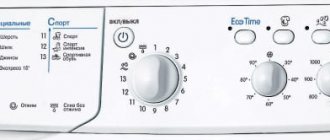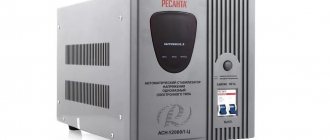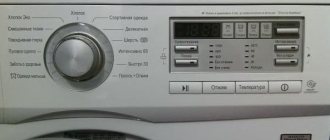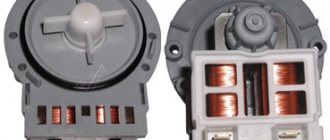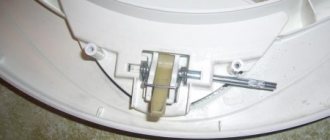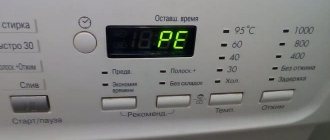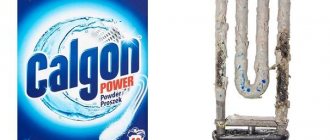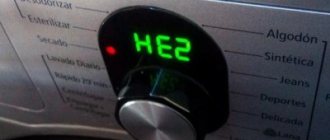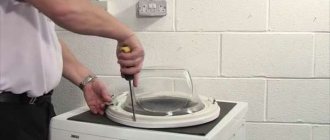For people who do not have in-depth knowledge of electrical engineering, the term residual current device (RCD) will not say anything specific. And many houses and apartments still do not have such a device. Although it is definitely worth installing in rooms with a large number of electrical appliances (for example, a kitchen or bathroom).
This device is designed to protect people and electrical equipment from accidental electric shock or leakage of electric current.
It is also possible to install a differential automatic machine (difavtomat) instead of an RCD. The general principle of operation of the difavtomat is similar to a residual current device, but has several additional functions: protection not only against current leakage, but also against short circuits and overloads in the electrical network. An automatic switch is also installed in its design.
Externally, it looks like a small plastic box with a toggle switch and several holes for connecting electrical wires. But the apparent simplicity of the design has no analogues.
The operating principle of the RCD is quite simple. The device constantly “compares” the current going to electrical appliances with the current coming from them, and if a difference occurs, it automatically turns off the power grid. But there are still drawbacks to this design. If, during an electric shock to a person, the current does not leave the closed circuit (is not grounded), the RCD does not trip because it “does not see” the voltage leak.
Rules for choosing ouzo
The most frequently asked question when installing and connecting washing machines: is it necessary to install an RCD for a washing machine? The answer is simple - yes, it is necessary. After all, the washing machine itself is a fairly energy-consuming device, and also operates in an environment with high humidity, due to which it belongs to the category of increased danger. That is why the installation of an RCD is necessary when connecting washing machines to the power supply network.
In order for the washing machine to serve for many years, and its operation to be safe, it is important to choose the right residual current device. To do this, you must follow the following rules:
- Device power. The choice of RCD for a washing machine based on power is based on the rated power of the electrical network. There are single-phase and three-phase devices.
- Mains voltage. Single-phase RCDs are designed for 220 V, and three-phase RCDs are designed for 380 V.
- Current strength. The most common RCDs, which are recommended by experts, have 30 mA protection. It can be set to 10 mA, but a similar degree of protection is not required for household electrical equipment.
- Design features of the RCD. Since the washing machine has a high level of power consumption, it is better to choose a class A residual current device. It is also possible to install class AC, but this type does not always perform its function well.
- Features of the release and marking of the machine. An RCD marked “C” is suitable for the electrical network in an apartment or private house. There are also devices with digital markings; in this case, the correct choice would be a device with a C16 marker or, more rarely, a C25.
- Additional levels of protection. Some RCD models do not have a protection system in case of a break in the neutral conductor, which leads to the device ignoring current leaks.
Is it necessary to install grounding?
It’s not enough to buy a washing machine, you also need to connect it correctly. When all pipes are connected, electrical work begins. Installation rules:
- Do not use the washing machine without grounding.
- Do not use extension cords. It is also not recommended to use a special extension cord with an RCD.
- In rooms with a high moisture content, sockets must be installed in a moisture-proof housing.
- Connect the washing machine through a protective device.
Among the important parameters of automatic protection is leakage current. The device reacts precisely to it. If the wiring is new, take the 10 mA option. For a circuit break to occur, the difference in current between phase and neutral must be 10 mA or more. If the wiring is old, use a 30 mA RCD to avoid erroneous shutdowns.
Another nuance that is important to pay attention to when choosing an automatic machine to connect to a washing machine is the manufacturer. There are two options:
- Expensive and high quality - Legrand or ABB.
- Budget - IEK.
These are the most famous companies on the market that produce protective automation. Chinese versions are cheaper, but they will not provide the reliability that European devices provide. If you select the wrong power and electric current, the plugs will be knocked out every time you start the machine.
In modern washing machines, the housing has a potential that is half the network potential - 110 V. Thanks to the grounding wire, this potential flows to the ground. Why is this done? The point is in the features of network filters that suppress electrical interference produced by the washing machine during operation. The device body is connected to the electrical network not directly, but through filters.
Grounding helps protect a person from electric shock if insulation damage occurs. If there is no grounding, a person touching the case feels a tingling sensation, and sometimes even more serious shocks. In a damp room, a washing machine without grounding can cause serious electrical injury, even death.
By installing a difavtomat on a washing machine, you solve two problems at once - you eliminate equipment breakdowns due to problems in the electrical network and protect its users from electric shock.
This device is designed to protect people and electrical equipment from accidental electric shock or leakage of electric current.
We invite you to familiarize yourself with Small bugs in cereals
It is also possible to install a differential automatic machine (difavtomat) instead of an RCD. The general principle of operation of the difavtomat is similar to a residual current device, but has several additional functions: protection not only against current leakage, but also against short circuits and overloads in the electrical network. An automatic switch is also installed in its design.
Externally, it looks like a small plastic box with a toggle switch and several holes for connecting electrical wires. But the apparent simplicity of the design has no analogues.
The operating principle of the RCD is quite simple. The device constantly “compares” the current going to electrical appliances with the current coming from them, and if a difference occurs, it automatically turns off the power grid. But there are still drawbacks to this design. If, during an electric shock to a person, the current does not leave the closed circuit (is not grounded), the RCD does not trip because it “does not see” the voltage leak.
Uzo connection
It is better to entrust connecting the washing machine to a specialist electrician, however, if you have basic knowledge in the electrical installation industry, you can complete this task yourself without much difficulty. The washing machine must be connected to the electrical network via an RCD in compliance with safety rules, comply with all requirements and take into account the technical characteristics of both the washing machine and the electrical wiring.
- Power, cross-section and wiring markings. The most common power of washing machines is from 2 to 2.5 kW. The meaning of this characteristic is written in the documents for the washing machine or on the back wall of the machine itself. Based on its power, you can choose the wiring of the correct cross-section. If the socket for the washing machine is powered by a two-core, especially aluminum, wire, it is necessary to replace the electrical wiring with a three-core copper cable. In this case, it is better to take a wire with a cross section of 2.5 square meters. mm, because this outlet will also plug in other electrical appliances, for example, an electric razor or a hair dryer.
Grounding of electrical appliances. Since washing machines are most often installed in the bathroom, they are equipped with a maximum protection system against electric shock - protection class 1. This means that the device is equipped with a grounding system that is built into the power plug.- Socket. Taking into account the presence of a grounding system in the plug of electrical appliances, it is better to choose a socket with an appropriate contact, the so-called “Euro” socket. If the outlet will be installed directly in the bathroom, it is better to give preference to a model with an increased degree of protection. Such models are designed for use in rooms with high humidity.
It is strongly recommended not to use a variety of extension cords and tees, since their reliability is not always at a high level. Such devices may not always provide a high-quality connection to the grounding contact or withstand high loads.
Tips for use
When connecting an extension cord to an automatic machine, you must adhere to several important rules
It is important that there are not many sockets in the unit, and most importantly, that in parallel with the washing machine you do not have to turn on other large household appliances. It is better to unroll the extension cord completely
This meets safety regulations, and this method reduces cable heating. If possible, you should take an extension cord with snap-on sockets.
Under no circumstances should you connect this device if the parameters for the number of cable cores and wire cross-sections do not match. The same applies to the situation when this device parameter is less than that corresponding to the power of the washing machine. During washing, it is recommended to check from time to time how hot the wire is at different points. Room temperature indicates that everything is fine with the extension cord
It is important to remember that when carrying the wire, it should not be tied in a knot or twisted in any way. In addition, do not place any objects on top of the wire.
The extension cord can only be connected in cases where both all its components and the socket are in working order. Wires should not be placed under the carpet or laid through the threshold.
To learn how to install an extension cord for a washing machine, see the following video.
Connection diagram of the washing machine to the power supply system
For a washing machine, it would be better to install wiring that is powered directly from the electrical distribution panel. The RCD is installed in a place convenient for use, but preferably outside the bathroom. The socket is connected to the power supply only after a residual current device.
What not to do when connecting a washing machine:
- Close the body of the washing machine with metal water pipes or the heating system (in other words, do not ground it);
- Close the grounding and neutral contacts in the socket - this will trigger the RCD.
Why are extension cords banned?
The power wires transmit power of more than 2 kW. Therefore, all disconnecting connections must ensure perfect contact. This is possible with European sockets that have a large area of contacting contacts. But this cannot be done without losses, and extension cords only increase them. The consequence of losses is heating. Extension cords are often plugged into regular sockets - with the help of adapters, losses increase even more. Due to constant heating, contacts burn and plugs and sockets deteriorate. As a result, a fire occurs.
Reasons for triggering the ouzo
It is not often that the RCD trips when the washing machine is turned on, but it still happens sometimes. And in this case, you should not immediately call a specialist. You should first try to independently determine the reason for the operation of the protective device, and then decide what to do next.
There are a large number of reasons why an RCD is triggered, the most common of them are listed below:
- The residual current device is not selected correctly. If the RCD was selected without taking into account the characteristics of the washing machine, and its energy intensity is lower than necessary, then it will immediately turn off, perceiving the inclusion of more powerful equipment as a network overload;
- Problems with electrical wiring. Old or unsuitable electrical wiring may not be able to withstand the load, which can also lead to the machine tripping (in this situation, the RCD protects old or weak wiring from fire);
- Electricity leakage onto the equipment body. In this situation, if the neutral wire is connected to the housing and additional grounding is created, the protective device automatically turns off;
- A malfunction of the heating element, electric motor or surge protector, or shorted contacts and buttons can also trigger the RCD. In this situation, in the absence of knowledge in the field of electrical engineering, it is better to turn to specialists.
Expert advice on installing devices
Connecting a car to the electrical network can be completely simple - plugging a plug into a socket, or complex - even installing a ground loop outside the house. To make fewer mistakes, it is useful to familiarize yourself with the recommendations of experienced professionals. Here are some tips from electricians:
- never ground the car to heating radiators or water and gas supply pipes;
- in a private house, the best place to install a washing machine is the basement: noise, odors, and dampness do not reach the residents;
- The smart way to connect to the power grid is to run a three-core cable from the panel on which to install the difavtomat;
- Do not place the socket for the machine below 30 cm from the floor level, closer than 0.6 m from plumbing, near heating pipes, water supply, or on a cold wall - condensation may form on the terminals.
Experts advise placing the socket slightly above the machine and on the side so that it is convenient to turn on the plug. The main warning is to follow the rules for handling electricity, all work with which is classified as dangerous.
Calculation of the current characteristics of the difavtomat
The automatic device on the washing machine will protect against both short circuit and breakdown to the body at the same time. Which type of automatic machine to install on the washing machine depends on its characteristics, the state of insulation of the conductors, location and operating conditions. Typically its power ranges from 1500-2500 W. If leakage currents (Ilt) are not indicated, then when choosing, you need to focus on the rules for electrical installations.
According to them, Iut of the device is calculated as the product of 0.4 mA by a number equal to the load current of the device. The latter is calculated by dividing the power of the device in watts by the network voltage in volts.
For example, the power of a washing machine is 2.5 kW. Then the load is 2500/220 = 11.37 Amperes. Iout of the device will be equal to 0.4x11.37=4.548 mA. If the differential circuit breaker is located in an electrical panel, far from the washing machine, then you need to take into account the leakage current of the phase wire from it to the device. It is equal to 0.01xL, where L is the length of the phase wire from the residual current device to the protected equipment.
The rules determine that the shutdown current (IΔn) of the RCD must exceed the total Iut of the protected line by at least three times. Therefore, with a cable length of 20 m and a load of 11.37 A, we end up with:
IΔn=3*(0.4xI +0.01xL)=3(0.4x11.37+0.01x20)=14.244 mA.
The closest in parameters in the range of manufactured difavtomats has an IΔn equal to 30 mA, and this is what you need to choose. The circuit breaker against short circuits and overvoltages is determined based on the load. Since in this case it is equal to 11.37 A, the closest one from the top in the range of automatic machines will have a rating of 16 A.
Checking the quality of work
You can verify that the installation has been completed correctly using a test screwdriver; it can be successfully replaced by any household appliance powered by the mains, for example, a table lamp. If everything is fine, you can seal the channel and move on to finishing the walls.
Good wiring is a guarantee of safe operation of any household appliances: refrigerator, water heater, dishwasher and washing machine. Although laying wires and installing sockets is a rather complicated process, if you wish, you can do everything yourself. Of course, we must not forget that electricity is dangerous; if you have doubts about your own abilities, you should entrust the work to a master.
Selecting a difavtomat letter
When the washing machine starts, the starting current increases several times compared to the rated current. The difavtomat should turn off, but if you select it correctly, this does not happen. To understand the process, you need to analyze the time-current characteristic of the difavtomat. From it you can determine the speed and operating time of the electromagnetic release.
Protection devices are divided into three categories, according to which it is possible to determine how many times the electric current must be greater than the rated current in order for the machine to operate at lightning speed. This is what the lettering on the automatic machine says:
B16 means that it reacts instantly when the nominal value is exceeded by 3-5 times (48-80 A);- C16 means that the excess is 5-10 nominal (80-160 A);
- D16, respectively, 10-20 ratings (160-320 A).
It follows that in order to avoid false positives, it is better to use a difavtomat with the letter C, in this case C16 with Iut 30 mA.
In addition, there is such a characteristic as the rated breaking capacity. This is the maximum short circuit current that the automatic circuit breaker can turn off without loss of functionality. In new houses it is recommended to use circuit breakers with a value of 6000 A, in rural houses with old wiring 4500 A.
Installing an outlet
After the wiring is laid along its entire length, you can install the socket. The sequence of actions is as follows.
- Installation of a socket box. To fix it, use the complete fasteners, but it wouldn’t hurt to additionally “seat” it with cold welding or sealant.
- The ends of the wire are inserted into the hole in the socket box.
- Unpack the socket and take out its inner part.
- The terminals are connected alternately: phase, neutral, ground. At the same time, you need to ensure that the ends of the wire are not too tight; do not forget that it is quite possible that the socket will have to be repaired.
- Using standard fasteners, the socket is securely fixed in the socket box. No play is allowed; it must “sit” motionless.
- Screw on the plastic cover.
After this, the wire is connected to the machine; of course, at the time of connection, the electricity in the apartment must be turned off.
Rated current
By rated current we mean the maximum amount of current that the device can withstand for a long time without melting or damaging its contacts and other components.
Roughly speaking, it will work as if nothing had happened, retaining all its protective functions.
Do not be confused, if this value is exceeded, the RCD will not turn off! The circuit breaker should do this for him.
The main rule here is that the rated current of the RCD must be equal to or be one step higher than the current of the circuit breaker protecting this section of the circuit. That is, a machine that is located after the RCD.
Please note that many manufacturers simply do not have an ouzo for 32A. Basically, this denomination is found only among Chinese comrades
Therefore, the choice in the plate Inom = 40A is due precisely to this.
If your RCD is located at the input, then its current should be one step greater than or equal to the current of the input circuit breaker.
When several consumers with different circuit breakers are connected to one RCD in a group, then focus on the sum of their currents.
But what if this amount turns out to be even greater than the current of the input switch? Then take into account the introductory machine.
If you are completely confused in these calculations, you can use a convenient mnemonic diagram for selecting an RCD from KonstArtStudio.
Just answer a couple of questions in the navigation blocks and you will get the desired result.
What types of RCDs and differential circuit breakers are there based on the type of current leakage?
Electrical circuits use different types of currents, which is why protective devices are usually divided into classes:
- AC type. This is a common class of devices that have a budget price, so they are often used in apartments and country houses. They are calculated for the leakage of alternating current, on which most household appliances operate.
- Type A. Allows you to detect both AC and DC leakage. In recent years, manufacturers have begun to produce devices adapted specifically for such RCDs. Switching power supplies are used here to regulate power. Since these are more reliable devices, they cost a little more than the previous ones.
- Type B. These RCDs also react to any current leakage. However, they are often used only at production facilities and in public places. It makes no sense to install them in an apartment.
The marking by which the class is determined is located on the body of the device
